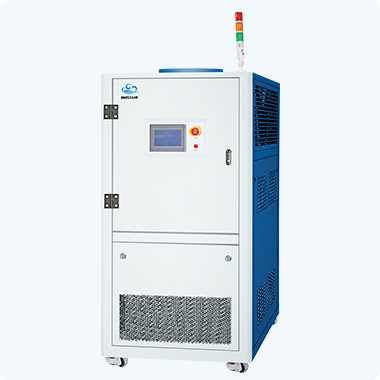The role of temperature control equipment in electrochemical energy storage system and related temperature control technology
With the wide application of renewable energy and the rapid development of electric vehicles, electrochemical energy storage systems (such as lithium-ion batteries) are playing an increasingly important role in the field of energy storage. However, the performance and longevity of these systems are largely dependent on their operating temperature. Therefore, the key role of temperature control equipment in electrochemical energy storage systems cannot be ignored. This paper will discuss the function of temperature control equipment and related temperature control technology in depth.
First, the role of temperature control equipment
1, maintain the appropriate operating temperature: electrochemical energy storage systems (such as lithium batteries) in too high or too low temperature, its performance will be affected. Temperature control equipment by precisely controlling the temperature of the energy storage system to ensure that it operates within the appropriate temperature range, thereby improving energy efficiency and extending service life.
2, to prevent thermal runaway: in extreme cases, there may be thermal runaway inside the battery, resulting in increased battery temperature and even fire. The temperature control device effectively prevents thermal runaway by monitoring the battery temperature in real time and taking corresponding cooling measures.
3, improve safety: temperature control equipment not only monitors the temperature of the battery, but also can be linked with other safety systems (such as fire alarm system), timely alarm and take emergency measures to ensure the safe operation of the energy storage system.

Second, temperature control technology analysis
1, liquid cooling technology: liquid cooling is an efficient temperature control technology, through the circulation of coolant flow, the heat generated by the battery away. This technology has the advantages of good heat dissipation and accurate temperature control, but it also needs to consider the choice of coolant and the complexity of the circulation system.
2, air cooling technology: air cooling technology uses natural convection or forced convection to use air as a cooling medium to dissipate heat from the battery. This technology is low cost and suitable for small energy storage systems, but may have limited heat dissipation effect in large systems.
3, heat pipe technology: heat pipe technology is an efficient heat transfer technology, using the working medium phase change inside the heat pipe to transfer heat. Heat pipe technology has the advantages of high heat transfer efficiency and good temperature uniformity, and is suitable for energy storage systems with high temperature control requirements.
4, thermoelectric cooling technology: thermoelectric cooling technology uses the Peltier effect to achieve the heating or cooling of the battery by changing the direction of the current. This technology has the advantages of fast response speed and no additional cooling medium, but the cost is higher, and it is usually used for energy storage systems with special requirements.
Third, the selection and application of temperature control technology
When choosing temperature control technology, factors such as the size of the energy storage system, working environment, cost budget and performance requirements need to be considered. For example, for large energy storage systems, liquid cooling or heat pipe technology may be more appropriate; For small systems or outdoor applications, air cooling may be more cost-effective.
In addition, with the continuous progress and innovation of technology, there may be more efficient, environmentally friendly and low-cost temperature control technologies in the future, providing strong support for the development of electrochemical energy storage systems.
In short, temperature control equipment plays a crucial role in electrochemical energy storage systems. Through in-depth understanding of various temperature control technologies and their advantages and disadvantages, we can choose the most appropriate temperature control solution for the energy storage system to ensure its safe, efficient and long-term operation.
Energy storage liquid cooling temperature control technology application advantages
How to derive the test results of high and low temperature coolant tester
High and low temperature coolant test electrical source circuit connection method
The problem of water source during the use of high and low temperature coolant testing machine
Coolant filling and discharging method of battery module high and low temperature liquid cooling test machine
High and low temperature liquid cooling test machine solutions
